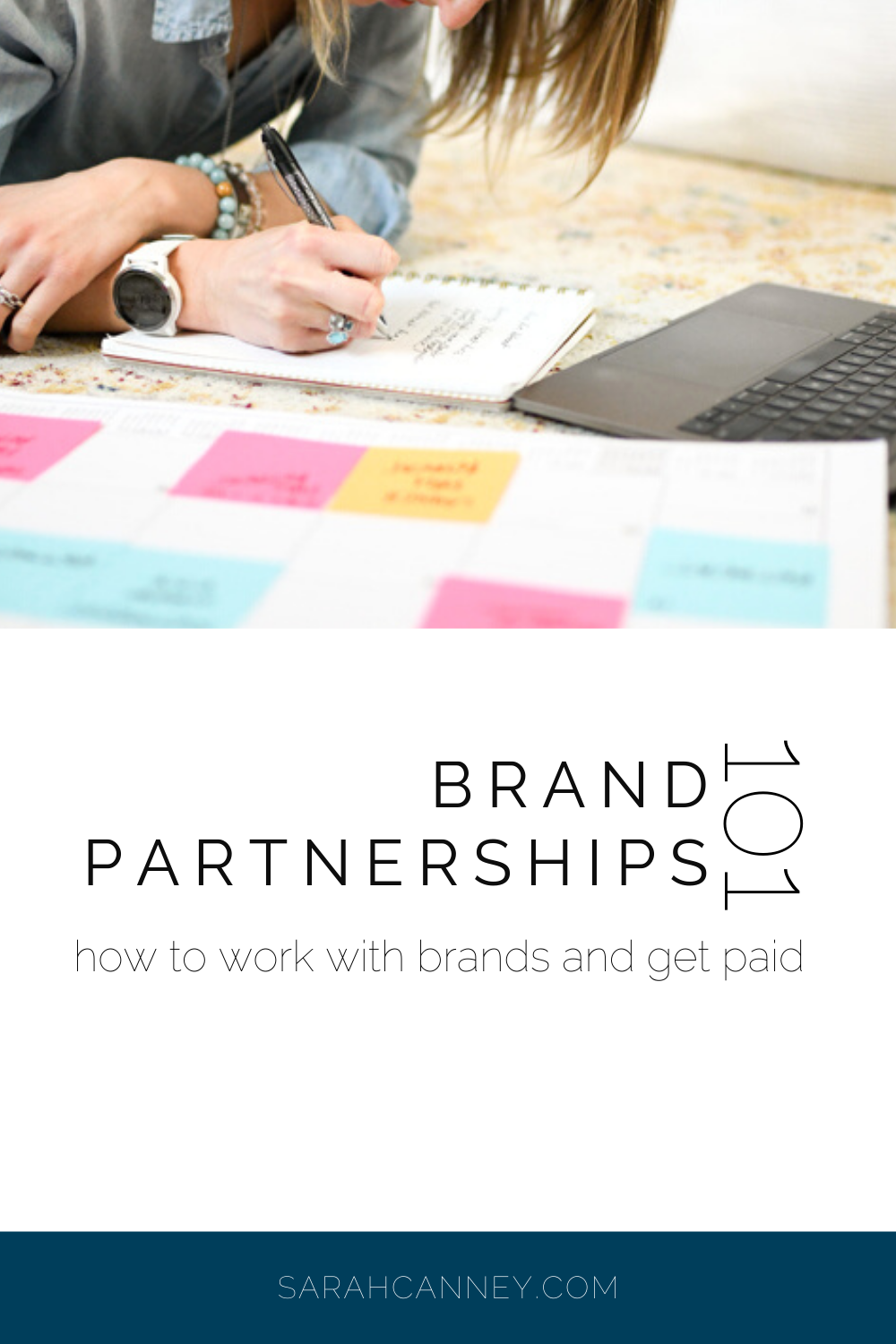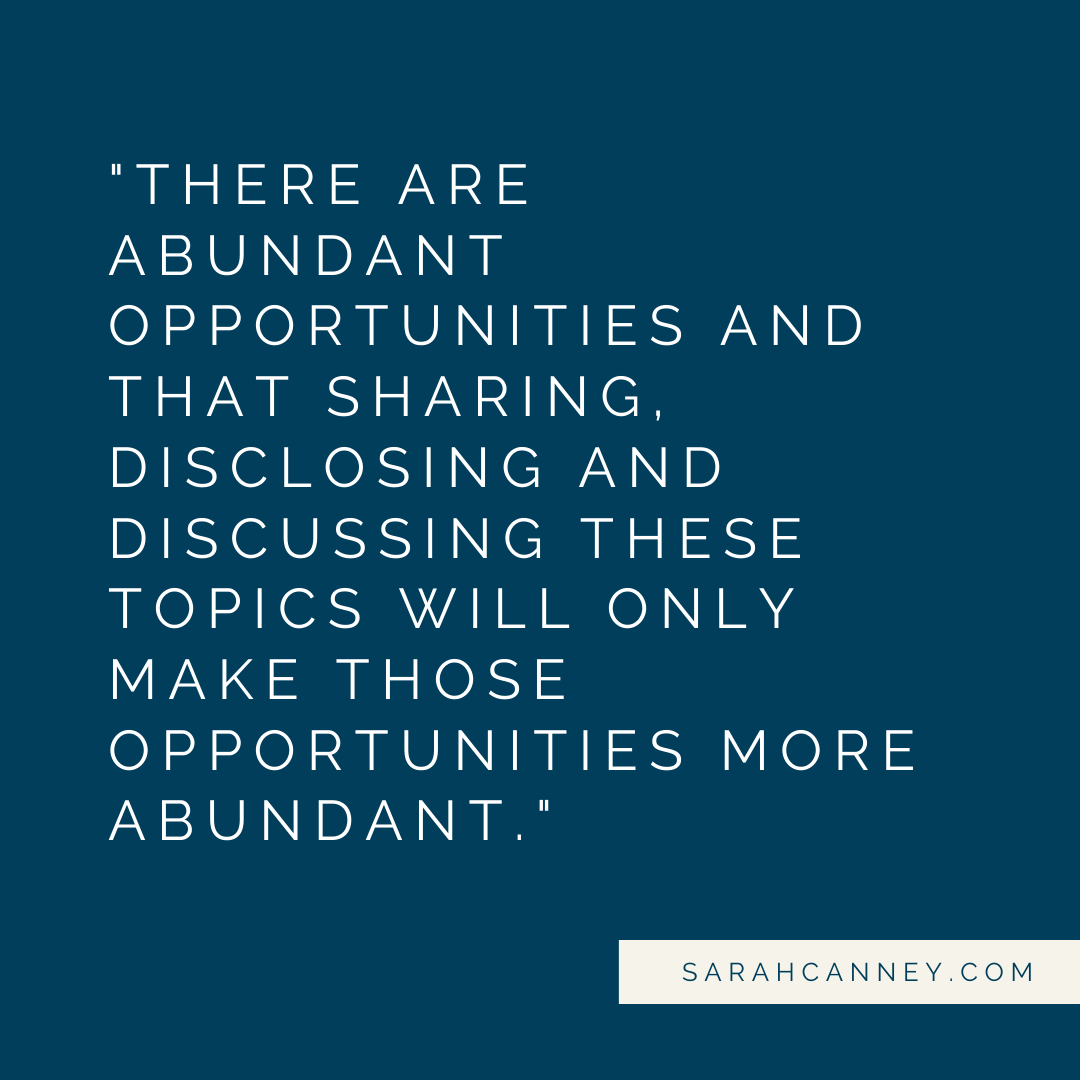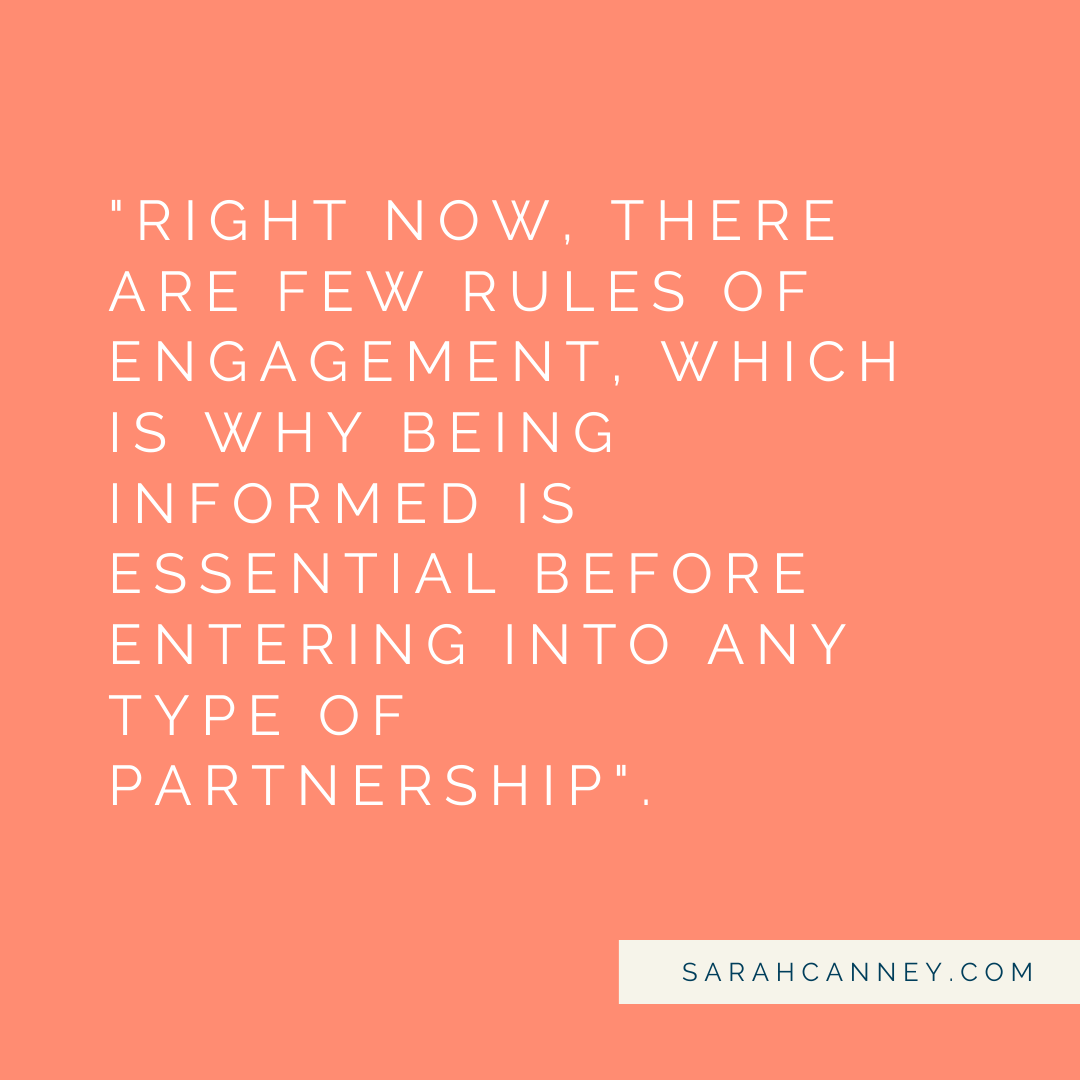Brand Partnerships 101: how to work with brands and get paid
This is the first post in a three-part series on Brand Partnerships. You can find the second post HERE and the third post HERE.
One of the questions I’m asked most when it comes to organizing a running retreat is how I manage brand partnerships. The relationships Rise.Run.Retreat. has with it’s brand sponsors are an essential part of the experience when it comes to our swag bags and oftentimes our operational budget as well.
But before I was managing partnership deals with my retreats, I was interacting as an individual with brands in relation to my blog and later on my social media platforms (primarily Instagram).
While I don’t work with brands as an individual as much anymore, what I’ve learned over the past nine years has the potential to help you as you look to engage with brands in any manner of collaboration.
This series of blog posts is intended to break down these partnerships into three major chunks:
Defining the brand partnerships
Knowing what to charge and how to pitch
Learning how to negotiate
Most of these topics are rarely talked or written about, often creators are protective of their hard earned knowledge and connections. They hesitate to share specifics (or sometimes can’t share specifics because of an NDA). My intention is to lift the curtain on these conversations in the faith that if we all know more, we will all be better off. I come at this from the belief that there are abundant opportunities and that sharing, disclosing and discussing these topics will only make those opportunities more abundant.
Many brands knowingly take advantage of the fact that many new influencers have no idea how the game is played. If you’re armed with information, you’ll be better able to advocate for the value you present and find yourself in beneficial and uplifting partnerships as opposed to being tethered to an obligation where it feels like you’re being taken advantage of.
Whatever it is, the way you tell your story online can make all the difference.
Are you ready?
Let’s do this.
When it comes to brand partnerships there are a multitude of ways that collaboration can take shape, but the most common are ambassadorships, affiliates and paid partnerships. Let’s dive into exactly what these are and the pros and cons of each type of relationship.
Ambassadorship
Typically an unpaid relationship, brand ambassadors are often ‘compensated’ with free product or product discount. Ambassadorships can be loosely defined or can often come with a contract stipulating a certain number of posts in a given time frame. Those contracts can also include exclusivity and provide further limitations and guidelines for the ambassador.
Pros: If it is a brand you use and would purchase anyway and the partnership feels natural, then an ambassadorship might be helpful to you. Sometimes you can parlay an ambassador relationship into a paid partnership, although that is rare. I’ve been able to leverage former ambassador relationships into support for Rise.Run.Retreat. A good brand relationship can be really helpful.
Cons: Locking yourself into a contract as an ambassador can preclude you from a better offer down the road. For example if you’ve agreed to an unpaid ambassador partnership with a hydration brand and then are approached by another hydration brand with a paid opportunity, you’ll be forced to turn down the paid opportunity. Unless there’s financial compensation, avoid signing any ambassador contracts. And remember, free bars or shoes or tank tops don’t pay the bills and the more you accept these unpaid offers the harder it gets to negotiate for paid opportunities.
Affiliates
An affiliate partnership can be very similar to an ambassador partnership with product discount or free product, but in addition the brand affiliate receives a commission on the sales through their referral. Brands track these referrals through unique discount codes or URL’s and provide the affiliate with a percentage of the sale anywhere from 5-25%.
Pros: Depending on how many sales you generate, an affiliate partnership can provide a source of income. It turns an unpaid ambassador-type relationship into a paid opportunity over which you have control.
Cons: An important thing to remember is that whatever kind of relationship you have with a brand, when you talk about the product you are selling to your audience. With an affiliate relationship it is easy to push the product more frequently because you get a kickback from the brand. Keep in mind that the more you sell to your audience the more likely they are to tune you out, be careful about the frequency at which you are pitching products and remember that any affiliate partnership you may have could detract from your ability to sell your own products or services.
Paid Partnerships
The paid partnership is really the one that everyone wants and they can come randomly or you can seek them out (we talk more about this in the What to Charge and How to Pitch). As you can easily surmise a paid partnership with a brand involves financial compensation for content (called deliverables) that you create. These partnerships can include a formal contract or sometimes outlined verbally or through informally written terms. Typically, a brand will approach a creator with a specific idea of what content they need and the amount they are willing to spend. Depending on the size of your platform they may ask for your rates before pitching their content ideas. Either way, once the brand approaches you, the ball is in your court and it is up to you to negotiate your rates and what you’re willing to deliver within the structure of the contract or agreement.
Pros: You’re getting paid actual money. Major pro.
Cons: There aren’t set rates or standards for influencer compensation, although that may be changing soon as the influencer marketing receives more oversight (SAG AFTRA is now accepting influencers into their union). If you’re just getting started it can be hard to walk away and leave money on the table, so it is tempting to do A LOT of work for what ends up being a very little amount of money when you break it down hourly. Knowing how long it takes you to produce the requested content and having established rates can help you avoid getting stuck in a paid partnership that takes advantage of you.
Weighing the pros and cons of each type of relationship is essential before signing any kind of contract or agreeing to any partnership. Brands are still trying to figure out their relationship with influencers and there are as of right now, there are few rules of engagement, which is why being informed is essential before entering into any type of partnership.
Whatever it is, the way you tell your story online can make all the difference.
What I’ve found is that when a brand approaches you with a spirit of generosity and respect, you’ll be able to negotiate a relationship that is truly collaborative and that you feel good about. However, the opposite is more common, often brands are looking to get as much as possible for as little as possible this is especially true for BIPOC creators who often are compensated far less than their white counterparts.
I recently listened to a podcast on the topic of influencer marketing strategy, it was clear from the conversation that the CEO of the company (that was leveraging influencers to market their products) had a subtly negative view of influencers themselves. They noted that influencers often inflated their rates, implying that they weren’t deserving of fair compensation. The conversation, intended to be insightful for a brand wanting to engage with influencer marketing, proved to be very revealing about this particular brand’s culture.
Carefully consider who you are aligning yourself with when it comes to brand partnerships. Ask yourself:
Does the brand’s mission and vision align with my own?
What is the brand’s ethos?
What is the culture of the brand?
If you can establish what you are willing to do and not do, what your rates are and your principles for engagement when it comes to your relationship with your audience, then you’re much more likely to find success in any brand partnership you pursue.
In the next post in this series, I’m talking about What to Charge and How to Pitch so you can be prepared for any brand partnership.
Have questions? Feel free to shoot me an email or check out my Runpreneur Academy where we dive deep into the answers to all these questions.
-Sarah



